With the growing popularity of mobile payments, digital wallet security is becoming a critical focus for businesses and investors alike.
As more consumers rely on mobile wallet security for daily transactions, ensuring the safety of their personal and financial data is a top priority.
While wallet apps today offer features like encryption and multi-factor authentication, the real question is: Is the wallet app safe enough to build long-term trust with users?
As the digital payment industry expands, companies must focus on strengthening security measures to keep up with evolving threats. This includes investing in cutting-edge encryption technologies and implementing proactive security protocols to safeguard against breaches.
For those who have a finance business, prioritizing mobile wallet security is essential for long-term growth and customer loyalty.
Ensuring the safety of digital wallets isn’t just a trend-it’s a necessity.
What is Digital Wallet App Security?
Digital wallet app security is the set of practices, technologies, and features that ensure your digital transactions, payment information, and personal data remain safe and private. No more fumbling for cash or worrying about your physical cards.
But here’s the big question: Are digital wallets more secure than traditional wallets? With features like encryption and two-factor authentication, the answer is yes, but only if you take steps to protect it. Digital wallet security is crucial in keeping your data safe from hackers.
Want to create an eWallet app? Focus on building a secure digital wallet that not only protects users’ payment info but also keeps their personal data locked down tight.
With the rise of more secure digital wallet crypto options, the need for robust security has never been more important. The future of payments is digital-make sure it’s safe.
Digital Wallet Security: A Market in Flux
As digital wallets become more popular, understanding their security landscape is crucial for businesses and investors.
Whether you are starting an eWallet business or just curious, staying updated with trends is essential.
Let's dive into some thought-provoking stats:
-
- Fraud Detection Advances: AI-driven fraud detection systems reduced fraudulent activities by 32% across major online payment platforms.
- Biometric Adoption: 45% of digital wallets now use biometric authentication, like fingerprint or facial recognition, enhancing user trust.
- Biometrics Lead the Way: In 2024, biometric systems held a 59.2% share in mobile payment security, offering reliability and speed.
- Banking Sector Vulnerabilities: The banking and financial services sector accounted for 34.3% of mobile payment security usage, highlighting its need for robust protection.
- Fraud Detection: AI-driven fraud detection systems, a key component of AI in digital payments, are projected to reach approximately USD 108.3 billion by 2033.
These figures underscore the dynamic nature of digital wallet security, emphasizing the need for continuous innovation and investment in app security.
Key Security Threats in the eWallet App
When it comes to eWallet app development challenges, digital wallet security is paramount.
While most digital wallets offer basic protection, ensuring the safety of sensitive data, the question here is, are digital wallets secure enough?
Let’s dive into some of the major security threats one can face:
1. Data Breaches
Data breaches remain a significant threat to digital wallet security.
If an eWallet app is not properly encrypted, hackers can access users’ financial details, personal data, and login credentials.
Without a secure infrastructure, digital wallets become prime targets for these attacks.
Developers must implement advanced security protocols to protect sensitive data from unauthorized access.
2. Phishing Attacks
Phishing is a common tactic used to trick users into providing their login information.
Fraudsters create fake apps or websites resembling legitimate eWallet apps, hoping to lure users into entering their personal details.
Is digital wallet secure enough to prevent this?
Apps with robust mobile wallet security measures, including anti-phishing technology and secure links, can help protect users from falling victim to these scams.
3. Weak Encryption
Encryption is essential in keeping transaction data safe while it’s being transferred.
Without strong encryption, the information exchanged between the user and the secure digital wallet is at risk of being intercepted.
Many mobile wallet security solutions today focus on upgrading encryption standards to ensure eWallet app development is secure from any potential breaches during transactions or logins.
4. Inadequate Authentication
Using only basic passwords for authentication makes digital wallets vulnerable to hacking.
Implementing multi-factor authentication (MFA) significantly enhances the security of digital wallets by requiring users to confirm their identity with more than just a password.
This adds an extra layer of protection, ensuring unauthorized users cannot access the app, even if they have a password.
5. Malware
Malware poses a significant threat to mobile wallet security.
If a user’s device is infected with malicious software, hackers can potentially gain access to the digital wallet app and steal personal and financial data.
Developers must build apps with malware protection and educate users to install antivirus software, ensuring their devices remain free from harmful threats that could compromise their eWallet security.
6. Social Engineering
Social engineering is a significant threat to eWallet security.
Hackers manipulate users into revealing personal information through deceptive tactics, such as fake emails, calls, or messages.
By posing as trusted sources, they trick users into sharing login details or financial information.
To protect against this, users must stay vigilant and verify requests before disclosing any sensitive information.
To make your digital wallet secure enough, ensuring strong user awareness and security measures is critical to maintaining trust and protecting financial assets.
7. App Cloning
Fraudulent eWallet apps that clone legitimate apps are becoming more sophisticated.
They mimic the original app’s interface and steal user information.
This is a serious concern in eWallet app.
Developers must focus on ensuring app integrity through secure coding practices and offering users clear signs of authenticity to avoid falling for app cloning scams.
It’s vital to ask how secure are digital wallets when dealing with this type of risk.
8. User Error
Sometimes, security breaches happen because users are not aware of the risks involved.
Weak passwords, downloading untrusted apps, or sharing login details with others can leave eWallet apps vulnerable.
Education is key in digital wallet security—developers should emphasize security best practices and encourage users to implement strong, unique passwords and enable two-factor authentication for an extra layer of defense.
Best Practices to Secure Your eWallet Apps
When you think about the security of your eWallet, it’s easy to assume everything’s fine.
But with digital wallets becoming more popular, the risks of breaches and fraud are ever-growing. This raises the issue, “How to secure an eWallet from hackers?”
Let’s talk about best practices for eWallet apps head-on so you can ensure your users are protected.
► Strengthen eWallet Encryption
Let’s start with the basics-eWallet encryption.
If you’re handling sensitive data, encryption is your best friend.
But, the question here is, Why is encryption important for digital wallets?
Encryption ensures that all data exchanged between your app and its servers is scrambled and unreadable to hackers.
Even if someone intercepts the data, they won’t be able to make sense of it. That’s why encryption is essential for any secure digital wallet. Make sure you’re using the latest and strongest encryption methods available.
► Implement Two-Factor Authentication (2FA)
Ever heard of Two-Factor Authentication (2FA)?
If not, it’s time to implement it.
This extra layer of security asks users to prove their identity through something they know (a password) and something they have (a one-time code sent to their phone).
Even if someone cracks the password, they still won’t be able to get in without that second factor. It’s a game changer when it comes to protecting your digital wallet.
► Use Tokenization for Digital Payments
Here’s a trick to keep your users’ payment details safe-tokenization.
So, How does tokenization work in eWallets?
When users make a payment, instead of using their actual credit card info, tokenization replaces it with a unique, one-time code.
So, if someone intercepts the payment data, all they get is a random string of characters that’s completely useless.
By adopting tokenization in digital payments, you can add an important layer of protection to your mobile wallet security.
► Adopt Secure Payment APIs
What about payment gateways? Make sure you’re integrating secure payment APIs.
These APIs are designed to process payments securely, encrypting transaction data and helping you stay compliant with security standards.
A solid payment API will handle everything from fraud detection to secure data transfer, ensuring that your users’ transactions are protected at all times.
Thus, partnering with the best mobile app development company ensures seamless integration of these APIs,
► Implement Fraud Detection Systems
What’s worse than a security breach? Not knowing it’s happening.
Fraud detection systems can keep you in the loop. By constantly monitoring transaction patterns, they help you spot suspicious activity early.
For example, if a user is making a big withdrawal from a new device, your system can flag it.
By using fraud detection in eWallets, you can protect your users before things go wrong.
► Leverage Biometric Authentication for Extra Security
Looking for a way to make your app both secure and user-friendly? Consider biometric authentication.
This method-using fingerprint scanning, facial recognition, or even iris scanning-makes logging into your secure digital wallet faster and safer.
Since biometric data is unique to each person, it’s much harder for hackers to replicate, making it one of the best ways to protect your app.
► Keep Everything Updated
It’s easy to forget about software updates, but they’re essential for your security.
Security patches fix vulnerabilities in your system, and failing to keep up with updates is like leaving a door wide open for hackers.
Make sure you’re regularly updating your app with the latest security features and patches to keep your eWallet encryption strong and your users safe.
By implementing these security measures, you’ll be well on your way to creating a secure digital wallet that your users can trust.
Whether it’s two-factor authentication or using tokenization in digital payments, taking proactive steps is the key to staying ahead of the game.
If you have an eWallet app idea, now is the time to bring it to life with robust security features. Talking about features, the next section is just about that.
Essential Security Features to Protect Your Digital Wallet
When it comes to ensuring the safety of your digital wallet, it’s crucial to understand the security features that protect your personal and payment information.
These features work together to safeguard your data, so you can use your eWallet with confidence.
To make things clearer, here’s a breakdown of the top security features of a digital wallet:
|
Security Feature |
Description |
|
Encryption for Data Protection |
Scrambles your sensitive data, making it unreadable to unauthorized users, ensuring only authorized access. |
|
Two-factor authentication (2FA) |
Requires two forms of identification (e.g., PIN and phone) to verify your identity, adding an extra layer of security. |
|
Biometric Authentication |
Uses physical traits like fingerprints or facial recognition to verify your identity, preventing unauthorized access. |
|
Tokenization for Payment Security |
Replaces sensitive information with a token, making it unreadable to hackers if intercepted. |
|
Device-Level Security |
Utilizes built-in security settings on your device (e.g., passwords or biometrics) to protect your mobile wallet. |
|
Fraud Detection and Alerts |
Monitors transactions for suspicious activity and sends instant alerts to help prevent fraud. |
|
End-to-End Encryption for Transactions |
Ensures that data is protected throughout the entire transaction process, from your device to the payment destination. |
|
Secure Backup and Recovery Options |
Allows you to back up your wallet and recover it on a new device, ensuring your data is protected if your phone is lost. |
These security features work together to make sure your digital wallet stays secure and your financial transactions are protected from any threats.
For inspiration, you can also take a look at top digital wallet apps paving the way for innovation.
Compliance and Regulatory Requirements for eWallets Safety
Ensuring eWallet compliance with global payment system regulations is critical for secure digital transactions.
As digital wallets become more prevalent, adhering to various compliance frameworks ensures that both financial institutions and users are protected from fraud and data breaches.
Here’s a breakdown of some key compliance and regulatory requirements for eWallets.
1] PCI-DSS Compliance for Payment Systems
PCI-DSS compliance ensures secure handling of payment card data, which is essential for any payment system, including digital wallets.
The Payment Card Industry Data Security Standard (PCI-DSS) sets guidelines for protecting cardholder data, reducing the risk of breaches, and ensuring that payment information is securely processed.
Key requirements for PCI-DSS compliance include:
-
- Encrypting cardholder data during storage and transmission
- Implementing strong access control measures
- Regularly monitoring and testing networks for vulnerabilities
Ensuring PCI-DSS compliance in payment systems is non-negotiable for digital wallet providers who handle credit card or bank account information.
2] GDPR and Data Privacy Considerations
The General Data Protection Regulation (GDPR) focuses on protecting users' personal data and privacy across the European Union.
For eWallet providers, this means implementing strict data protection measures and offering transparency regarding how user data is collected, stored, and shared.
GDPR data privacy considerations involve:
-
- Obtaining explicit consent from users before processing their data
- Allowing users to access, correct, or delete their personal information
- Ensuring that data is stored securely and used only for its intended purpose
Compliance with GDPR is essential for eWallet providers operating in or with customers in the EU.
3] PSD2 and Strong Customer Authentication (SCA)
The Revised Payment Services Directive (PSD2) mandates stronger security for online payments.
One of its key requirements is Strong Customer Authentication (SCA).
It ensures that payments are made securely by verifying the identity of the user through two or more elements: something the user knows (PIN/password), something they have (phone or device), or something they are (biometrics).
PSD2 requires SCA compliance for secure transactions, including:
-
- Implementing multi-factor authentication for all online payments
- Verifying customer identity before processing payments or transferring funds
- Reducing fraud by requiring more robust authentication methods
4] Local Regulations and Industry Standards
In addition to international regulations, eWallet providers must also comply with local laws and financial industry standards.
These regulations can vary depending on the country or region, requiring providers to stay updated on regional requirements to ensure compliance and security.
Local payment regulations may include:
-
- Specific data storage requirements
- Regional security protocols for payment systems
- Consumer protection laws that mandate how payments are processed and disputes are handled
Knowing just compliance isn’t enough, check out real-life examples of mobile wallet security breaches and learn from them.
Real-World eWallet Security Breaches and Insights
When it comes to digital wallets, security breaches are a serious concern.
In recent years, hackers have found ways to exploit vulnerabilities, leading to costly consequences for both users and businesses.
Let’s dive into some real-world cases of digital wallet fraud and the lessons learned from payment system breaches so you can better protect yourself and your eWallet.
A] Example: The 2019 Google Pay Vulnerability
In 2019, Google Pay was found to have a vulnerability that allowed hackers to exploit the app and initiate unauthorized transactions.
The flaw was discovered in the method that linked the app to the user's payment method.
Once identified, Google quickly patched the vulnerability, reinforcing the importance of constant updates and bug fixes.
Key Lesson: This is just one of many examples of eWallet security breaches that emphasize regular security updates and vulnerability patches are essential to prevent hackers from exploiting weaknesses.
B] Example: Venmo and Account Privacy Issues
Venmo, a popular digital wallet in the U.S., was criticized for its lack of privacy settings. Transactions, by default, were public, and this allowed anyone to see what their friends were buying or paying for, making it vulnerable to social engineering and fraud.
This issue led to real-world cases of digital wallet fraud, where hackers could exploit this lack of privacy to target users.
Venmo took action by enhancing its privacy features, allowing users to better control who can see their transactions.
Key Lesson: User privacy should be prioritized, and privacy settings must be configurable to prevent unauthorized access to sensitive payment information.
Real-world cases of digital wallet fraud
C] Example: Apple Pay and Tokenization
Apple Pay is widely regarded for its strong security features, particularly its use of tokenization.
Instead of transmitting actual credit card numbers during transactions, Apple Pay uses a randomly generated token to represent the payment information, making it much harder for hackers to steal sensitive data.
This feature is an example of strong wallet security that reduces the risk of payment fraud.
Key Lesson: Tokenization can significantly improve security by replacing sensitive data with randomly generated tokens, making it unusable for criminals.
D] Example: PayPal's Multi-Factor Authentication
PayPal, a leading global payment platform, added multi-factor authentication (MFA) to enhance the security of its digital wallet services.
This required users to verify their identity through a second method (like a text message or app notification) when logging in from an unrecognized device or making certain transactions.
Key Lesson: Multi-factor authentication provides an extra layer of security, reducing the chances of unauthorized access to user accounts.
These examples of eWallet security breaches and strong security measures show how both weaknesses and advanced protection methods shape the future of mobile wallet security.
By learning from these real-world cases, you can better understand how to protect your own eWallet or payment system against potential threats.
As we are done with this, time to know the Future trends of Security.
Future Trends in eWallet Security
As digital wallets continue to evolve, so do the threats and technologies that shape their security.
Here are some key trends that will impact the future of eWallet security, along with the necessary advancements to protect users and businesses alike:
1. Quantum Computing and Its Impact on Encryption
Quantum computing has the potential to break current encryption methods like RSA and ECC, which are foundational for securing eWallet transactions.
As quantum computing advances, post-quantum cryptography will become essential to safeguard digital wallets and payment systems from quantum-powered attacks.
Impact:
-
- Increased demand for quantum-resistant encryption standards.
- eWallet providers will need to transition to new encryption algorithms that can withstand quantum decryption.
2. Decentralized Finance (DeFi) and Security Implications
Decentralized Finance (DeFi) is rapidly growing, but it introduces new risks, such as smart contract vulnerabilities that can be exploited by hackers.
eWallets will need to securely integrate with decentralized systems to prevent exploitation and ensure secure transactions.
Impact:
-
- eWallets will need enhanced smart contract auditing and testing.
- More secure integration with blockchain and decentralized finance platforms will be necessary.
3. The Role of IoT in eWallet Security
The Role of IoT in securing digital wallets (like smartwatches and connected home devices) expands the potential attack surface for eWallet systems.
To mitigate risks, secure communication protocols and strong device authentication will be critical for mobile wallet security.
Impact:
-
- Increased focus on IoT security to protect against vulnerabilities that could lead to unauthorized access to eWallets.
- Adoption of strong encryption on all connected devices and secure authentication methods.
4. Emerging Technologies for Secure Transactions
Blockchain technology will continue to play a significant role in ensuring tamper-proof transaction records, increasing transparency, and reducing fraud.
AI and machine learning will become more integrated into fraud detection, allowing eWallets to identify and prevent fraudulent activity in real-time.
Impact:
-
- eWallets will rely on blockchain for enhanced transaction transparency and security.
- AI-driven fraud detection systems will reduce fraud incidents and enhance transaction safety.
5. Biometric Authentication Advancements
Biometric authentication is a growing eWallet trend.
The future of biometric authentication in eWallet security will include multi-modal biometrics, such as combining fingerprint and facial recognition for more secure authentication.
Behavioral biometrics will provide continuous user authentication, monitoring how users interact with their devices to detect suspicious behavior.
Impact:
-
- Enhanced user authentication methods will provide a seamless yet secure user experience.
- Continuous monitoring of user behavior will help detect fraud in real-time.
6. Zero-Trust Architecture for eWallets
Zero-trust architecture will become a key principle in eWallet security, emphasizing the need to "never trust, always verify".
eWallets will implement micro-segmentation and least privilege access to reduce the risk of unauthorized access.
Impact:
-
- eWallet providers will adopt a more rigorous security model that ensures only trusted devices and users have access.
- Micro-segmentation will enhance security by isolating sensitive data from broader network access.
7. Tokenization and Secure Digital Identities
Tokenization will replace sensitive payment data with unique identifiers, ensuring that sensitive information isn't exposed in transactions.
New digital identity frameworks will provide seamless and secure user verification, reducing the risk of identity theft.
Impact:
-
- eWallets will increasingly rely on tokenization for data protection, ensuring that only authorized parties can access sensitive information.
- Digital identities will make user authentication easier and safer across various platforms and services.
8. Regulatory Evolution and Compliance
As the digital payment landscape evolves, new regulations will be introduced to address emerging threats like quantum computing and vulnerabilities in DeFi security.
Global standards for quantum-resistant encryption and DeFi security will be essential to ensure eWallet providers comply with international regulations.
Impact:
-
- eWallet providers will face growing pressure to comply with global security standards.
- Regulatory compliance will drive innovation in secure payment technologies to meet new challenges.
These emerging trends and technologies highlight the future of eWallet security.
Collaborate with JPLoft to Strengthen Your Solution
Looking to Build a Secure and Scalable eWallet Solution?
At JPLoft, a premier eWallet app development company, we understand the importance of creating a secure, user-friendly, and efficient eWallet app that meets the evolving demands of the digital payment world.
With over 1100+ successful projects under our belt, we've become a trusted name in the industry, specializing in developing cutting-edge eWallet solutions tailored to your business needs.
Our dedication to excellence has earned us recognition from top platforms such as Clutch, GoodFirms, and DesignRush for our groundbreaking work in the fintech space.
Whether you’re looking to secure your digital wallet or want to know how it affects your cost to develop an eWallet app, JPLoft is your go-to partner.
Collaborate with the best in the market and take your digital wallet to new heights today.
Conclusion
Digital wallet security is critical in today’s digital payment landscape.
With threats like data breaches, phishing, and malware on the rise, robust mobile wallet security measures are essential.
Implementing encryption, multi-factor authentication, and tokenization ensures safe transactions.
Compliance with standards like PCI-DSS and GDPR further strengthens trust. Emerging trends like quantum computing and decentralized finance demand proactive security upgrades.
By prioritizing eWallet security, businesses can protect user data, prevent fraud, and build long-term trust. Stay ahead with cutting-edge technologies and compliance.
Secure your digital wallet today-partner with experts to build a future-proof solution!
FAQs
eWallet security involves protecting digital wallets from fraud, unauthorized access, and cyber threats through encryption, biometrics, and secure transaction protocols.
eWallets are secure, but safety depends on encryption, multi-factor authentication, and user practices.
Yes, if vulnerabilities exist or security practices are weak.
Risks include hacking, phishing, weak passwords, and malware.
Use strong passwords, enable multi-factor authentication, avoid public Wi-Fi, and regularly update your app.





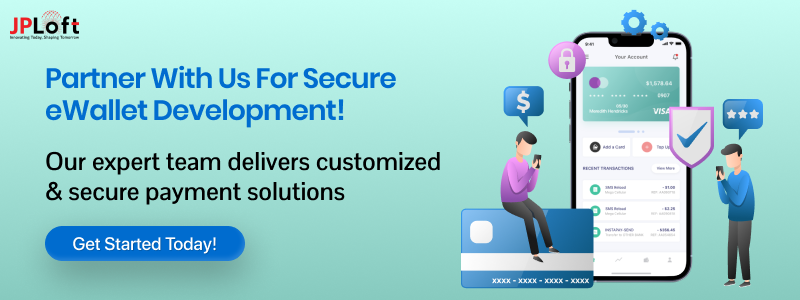
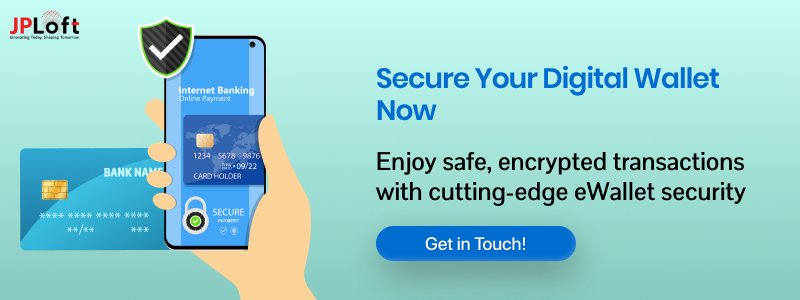

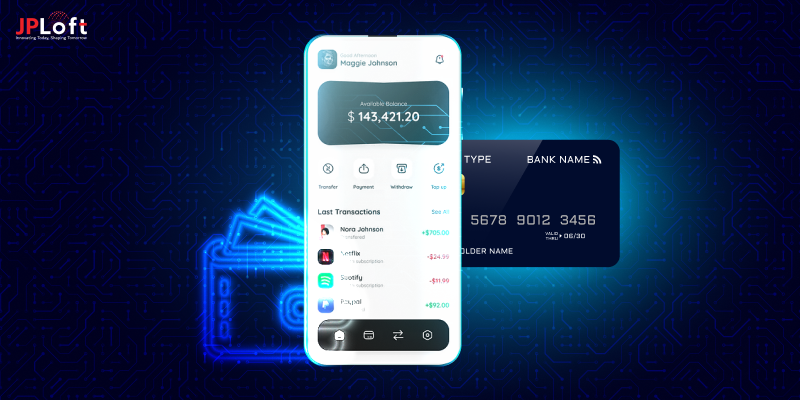
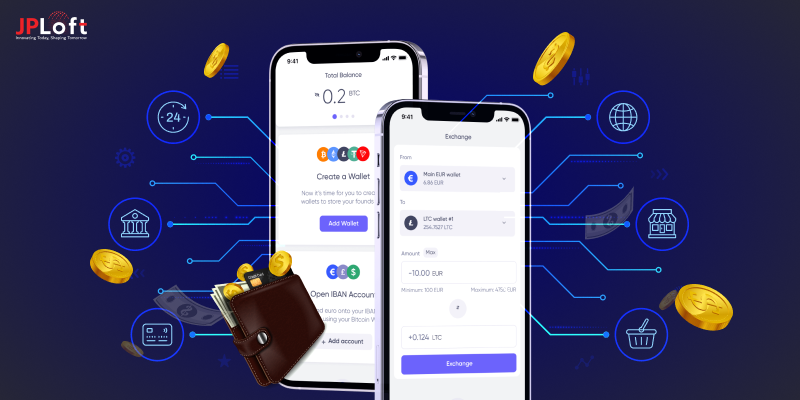
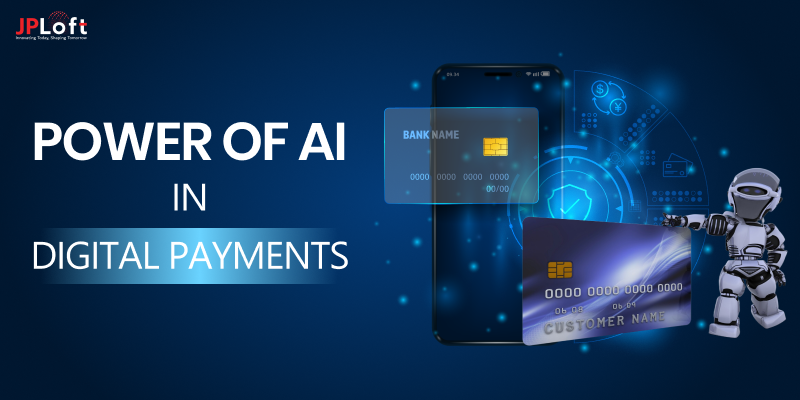



Share this blog